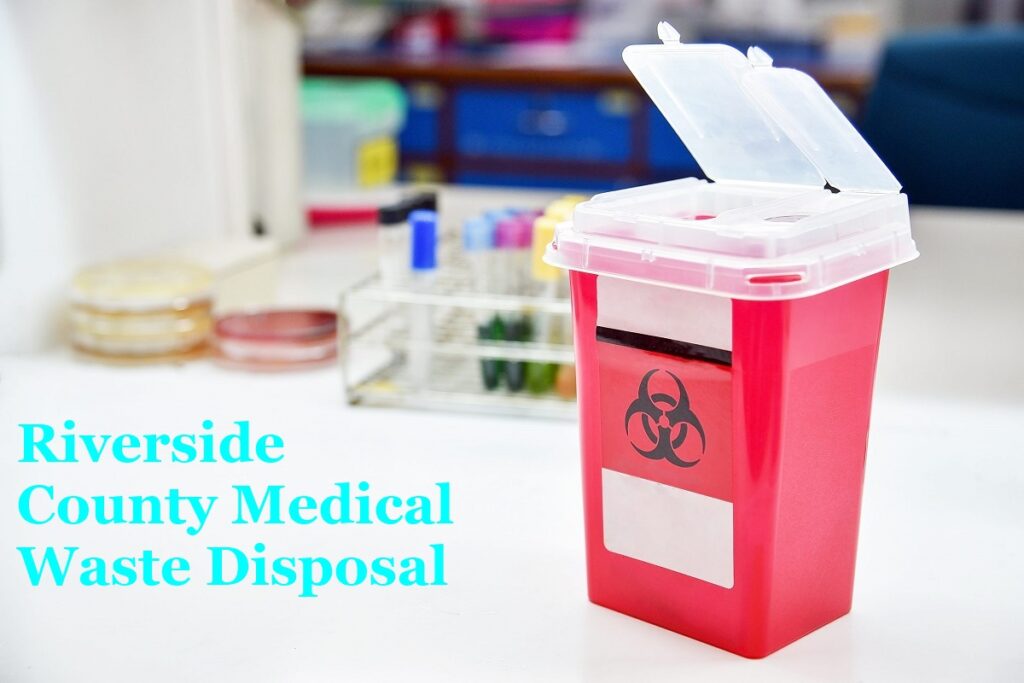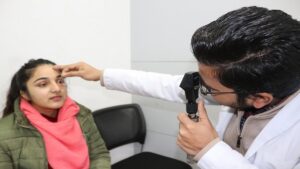
Ways in Riverside County Medical Waste May Be Properly Disposed Of
Riverside County Medical Waste Disposal – You may look across the world and admire the diverse customs, cultures, and faiths that people uphold to the fullest degree. You can study the differences between each nation and continent, but the one thing that all of them have in common is waste. To condense the types of garbage, let’s focus on medical waste.
Medical trash is a prevalent kind of garbage that comes in all different shapes, sizes, and forms.
What Is The Definition of Medical Waste?
Medical trash is exactly what its name implies. When patients receive medical care for their injuries, this kind of waste is produced. Hospitals are likely the first place that comes to mind when the phrase “medical waste” enters your consciousness. While you would be correct, hospitals are not the only location where such garbage is produced. Even houses may produce medical trash, and even while it won’t compare to what hospitals produce, if we take two bandages from each home, it will undoubtedly add up to a significant amount of medical garbage.
In a similar vein, medical waste is also produced by pharmacies, dental offices, and clinics.
Let Us Now Rank The Locations That Produce The Most Medical Waste:
According To The Ranking:
- Hospitals: There are many hospitals, even in the same city, let alone in the same nation, as they are the largest healthcare institutions.
- Clinics: The second most popular type of healthcare facility is a clinic. Though clinics tend to produce a good amount of medical waste, it is not as much as hospitals.
- Pharmacies: Although there are many pharmacies, they do not generate a lot of medical waste.
- Homes: This category is the lowest since the medical waste is not only extremely minimal but also not very dangerous.
Let’s dispel and describe the numerous sorts of medical waste that can be created across the hospital at various phases now that we are aware of how many locations produce medical garbage.
The Following Are The Many Kinds of Medical Waste That Residents in Riverside County May Encounter:
Riverside County Medical Waste Disposal – Waste that poses no harm comes first. This garbage is mostly composed of common waste items like papers, cardboard, juice cartons, empty crisps packets, and so forth. Although this kind of medical waste has not been shown to be dangerous to humans, it nevertheless poses a risk to the environment if it is not properly disposed of. Unfortunately, it does not cause air pollution or render our way of life poisonous.
Any sort of garbage that might hurt us and contaminate our environment is included in risk waste.
Given That Categories For Risk Trash Are Much Wider, Let’s List Every Sort of Risk Waste That May Be Discovered in Riverside County:
Risk trash includes infectious waste, such as old bandages, cotton balls, gloves, masks, and other items. This category also includes used needles.
Pathological waste is another classification. Typically, a hospital’s surgical departments are where this trash is generated. This category contains bodily organs and components such as the kidneys, liver, etc. Urine, fetuses, and any tubes or containers that carry body fluids fall within this category as well. Due to the difficulty of sometimes getting rid of this waste, this group is by far the worst and goriest. Let’s be logical here, who would want to touch an organ or body part that is covered in blood?
Riverside County Medical Waste Disposal – Radioactive Waste:
Riverside County Medical Waste Disposal – Medical waste that is radioactive comes next. Once more, a lot of folks are totally aware of it. Despite the fact that radioactive waste and chemical waste are not the same, they frequently coexist. Any material that contains chemicals or other dangerous elements qualifies as one of these wastes, whether it is a solid, liquid, or gas.
Radioactive waste comes next. It may seem not so common, but it really is common. This is unquestionably the most typical medical waste in hospitals alone. Now, chemical waste and radioactive waste is can be seen as quite different, but they go hand in hand. Both of these wastes refer to any substance, whether solid, liquid, or gas, that has chemicals or harmful ingredients within it.
Riverside County Medical Waste Disposal – Sharp items
Riverside County Medical Waste Disposal – Sharp items are present in every area, including the operating room for surgery, the ICU, and the examination center. Sharp things include needles for stitches and injections, razors, scalpels for making bodily slits, saws for cutting open a patient’s injured region, knives, and many more items. In hospitals, even glass is regarded as medical waste. Sharp medical waste is any object that may be used in a hospital to cut or pierce someone. Source: https://www.abcbnews.com/riverside-county-medical-waste-disposal/
Riverside County Medical Waste Disposal – Hazardous
Riverside County Medical Waste Disposal – It already appears hazardous that medical waste is present in Riverside County based on the facts we already have, am I right? You are entirely correct in your assumption, thus yeah. But if you have even the slightest glimmer of hope that the flow of medical waste may be stopped. Your sense of logic and reason has been compromised at that point.
Medical waste is unavoidable, no matter how hard we try. Recycling may be able to reduce waste for other items, but there is a difficulty with medical waste because it cannot simply be recycled. It is not advisable to use a needle that has previously been used on one patient on another since the blood, cells, and germs from the first patient have already been transferred to the needle.
Riverside County Medical Waste Disposal – Reduce Medical Waste:
Riverside County Medical Waste Disposal – If hospitals utilize something that has already been used, it violates health codes as well. Therefore, even if we may endeavor to reduce medical waste, it cannot be stopped. The only way to protect ourselves from the negative impacts of medical waste is to properly and legally dispose of it.
There are several ways to achieve this nowadays.
There Are A Few Techniques To Get Rid of Medical Waste in Riverside County (Riverside County Medical Waste Disposal) including:
- Autoclaving.
- Incinerating.
- Using chemicals.
- Microwaving.
Such methods can be employed, but what happens if you don’t employ such techniques? Then what?
A real-world illustration is required in order for you to completely see why it is crucial to properly dispose of medical waste. You will better grasp the detrimental impacts by using concrete examples. Our planet is already degrading.
Riverside County Medical Waste Disposal
Riverside County’s Consequences of Inappropriate Medical Waste Disposal:
Riverside County Medical Waste Disposal – To demonstrate to you how crucial it is to properly dispose of medical waste, we will now leap right into the impacts that medical waste may have on humans.
When it Comes To Medical Waste, We, People, Animals, And The Environment Face Such Consequences:
1. The Employees’ Risk:
Before the medical waste is disposed of, staff members might already be at risk. Sharp objects and materials that are contagious are not disposed of in regular trash cans for a reason. They can damage people who transport what they believe to be regular trash and pick it up themselves.
This Increases The Possibility That Both Medical Professionals And Support Staff Will Get Potentially Lethal illnesses Like:
- Hepatitis.
- HIV.
- Ebola.
- Syphilis.
- Malaria.
- Skin conditions.
- Skin cancer.
And a whole lot more. These illnesses don’t just cause discomfort and regret in the short term; some of them also have long-term repercussions that, if properly managed, may lead to your death.
2. Risk To Wider Public:
You should also assess the danger to the greater neighborhood. Medical waste that is transported typically ends up in landfills. It poses a direct hazard to anyone nearby. However, it does leak harmful substances into the air, land, and water. They can decay over the course of hundreds or even thousands of years since many of these chemicals have a long half-life.
As a result of our inability to relate to other situations when we have not been in their position when we hear stories like these on the news, they do not really touch us. We only become aware of the issue once we fall prey to it. We must properly dispose of medical waste if we’re to prevent anyone from becoming a victim. Don’t just keep heaping stuff on top of each other without thinking about how to get rid of it.
3. Our Clean Water Supply is Degraded:
If medical waste is not properly disposed of, it gets into the water system. It seeps into the groundwater by absorbing into the soil. The springs, streams, and rivers nearby ultimately get this groundwater. But the story doesn’t end there. Medical waste has the potential to spread far beyond the primary disposal site.
This water will eventually be used to make human drinking water. Decontamination techniques used in the past are useless. Humans should not consume water or use it to cook food. Now, this water isn’t just for drinking by people. All of us and all other living things suffer when we need to water our plants, our crops, or our cattle. That is because it is evident that food and water are necessary for all living beings to exist.
4. Wildlife And The General Populace:
If medical waste is not properly disposed of, it eventually finds its way into our waters. They have absorbed thereby vegetation and aquatic life.
As these toxins go up the food chain, many of them grow more potent. A fish that is closer to the top of the food chain, like tuna, will eventually turn deadly to people who eat it.
Wildlife is Subjected To The Potentially Harmful Effects of Medical Waste Substances Through The Water System, Which Might Result In:
- Birth deformities.
- Mutations.
- A higher chance of developing cancer.
- Health problems in general.
- Exposure to potentially fatal illnesses.
5. Crops:
This topic needs more research. However, preliminary studies suggest that even seemingly “harmless” medical waste, like ibuprofen, may have an impact on plant growth. Although little is known about the potential reach of these effects, they can damage root systems. Research is being done on this emerging area of concern.
The major section of this essay is now complete after delving deeply into the drawbacks and effects of inappropriate medical waste.
However, before we wrap off this piece, we’d like to provide you with a few tips on how to properly dispose of medical waste. You should first construct a list. This list must specify who will be allocated to clean which rooms and when, as well as what time. As a result, the hospital faculty is able to communicate more effectively and work together more cohesively.
Additionally, It Helps To Maintain Order And Keeps The Facility Spotless:
Next, we would suggest the simplest method for gathering medical waste. Every hospital room’s door knob may be covered with paper bags. The paper bags may then be removed by the workers before the night shift begins, and fresh paper bags can be set up.
After that, the cycle can be continued. The paper bags holding the used masks and gloves make it easier for all the physicians to enter and depart the room. We hope that hearing what might happen when medical waste is not disposed of properly, will motivate you to take action. Making changes is difficult, but you must begin somewhere. A change made now will improve the future. A positive today will result in a positive future.
“You don’t have to be great to start; you have to start to be great”, as they say.




